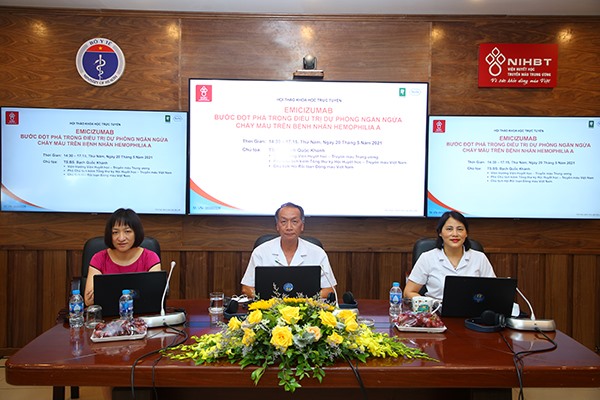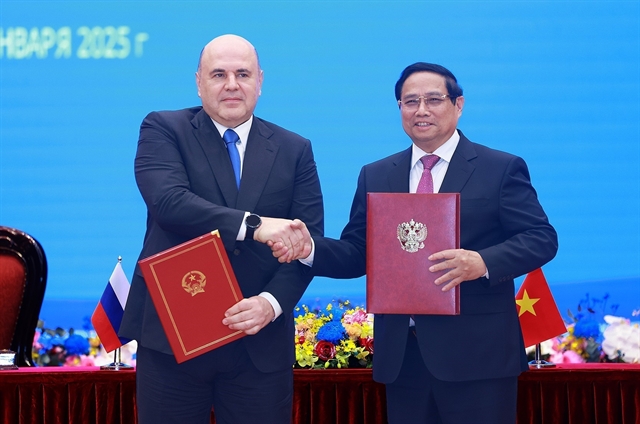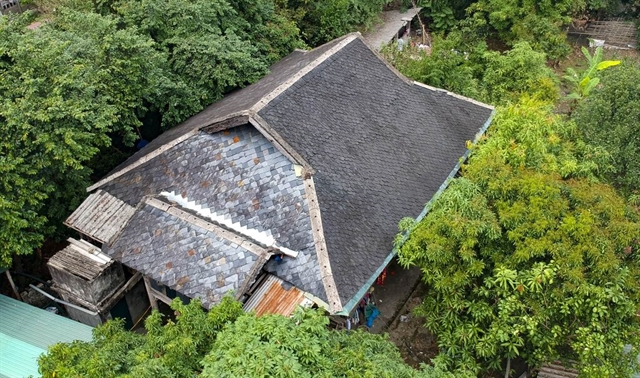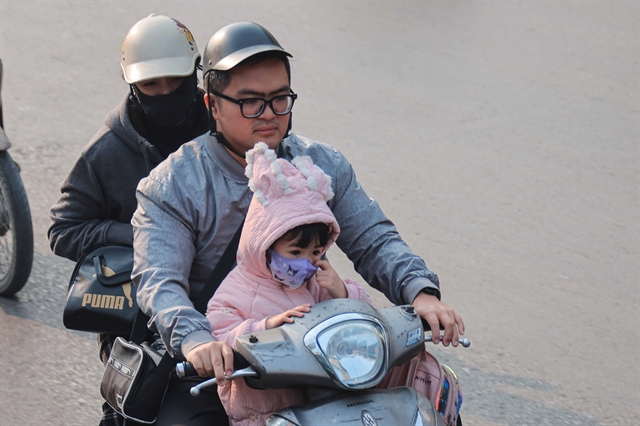

It is estimated that there are over 6,200 haemophilia patients in Việt Nam, of which haemophilia A cases (related to clotting factor VIII) account for 80 per cent.
The National Institute of Haematology and Blood Transfusion, in collaboration with Roche Vietnam recently hosted an online scientific conference in Hà Nội and HCM City with the topic “Emicizumab - the innovative prophylaxis treatment for Haemophilia A patients”. International and local haematology experts have provided a new method of haemophilia treatment in Việt Nam and the world.
Haemophilia is an inherited genetic disorder that impairs the body’s ability to make blood clots, caused by decreased or abnormal function of coagulation factor VIII and IX. It can cause a person to bleed even without being injured for a long duration and repeat many times.
40 percent of haemophilia patients haven’t been diagnosed or treated
According to Dr. Nguyễn Thị Mai, National Institute of Haematology and Blood Transfusion, there are over 6,200 people with haemophilia in Việt Nam, of which nearly 40 per cent have not been diagnosed or treated. If haemophilia is not detected early, diagnosed and treated properly, the bleeding episodes will deform the muscles and joints, causing pain and difficulty in movement and affecting the quality of the patient’s life significantly. If the bleeding occurs in risky areas, the consequence can be fatal to the patients.

|
Delegates attend the online symposium on haemophilia treatment in Hà Nội. Photo NIHBT
Although there is no current cure for haemophilia, early diagnosis and appropriate treatment can help the patients maintain their health and have an almost normal life. Injecting medicine regularly can help them avoid the risk of bleeding in daily life. Therefore, enhancing diagnosis work, early detection and treatment quality is an urgent priority that can help the patient have a better quality of life.
New advances in haemophilia treatment in Việt Nam
According to Dr. Mai, prophylaxis by regularly supplementing clotting factors to prevent bleeding can allow patients to live a healthy, active life and achieve a quality of life like people without haemophilia. Over the years, haemophilia care and treatment in Việt Nam has made remarkable progress. The country has developed 10 more haemophilia centres across the localities so far.
Many advanced methods in the world have been updated in the treatment for patients in Việt Nam, which have brought positive results. In addition, preparations for the treatment were increased in both quantity and type.
Dr. Bạch Quốc Khánh, Director of the National Institute of Haematology and Blood Transfusion, Chairman of the Vietnam Haemophilia Association, who is managing and giving treatment to nearly 2,000 patients, said that patients are provided with comprehensive care services, with multiple specialised activities such as muscles and joints recovery, orthopaedic surgery to improve complications; coordination with obstetricians and genetics specialists for prenatal diagnosis, pre-implantation diagnosis in order to limit the number of births with haemophilia.
Prof. Guy A Young, Keck School of Medicine, University of Southern California said: "Studies have shown that the new method with emicizumab for the prophylaxis of Haemophilia A has overcome the limitations of existing methods, as it helps to maintain a low bleeding rate in Haemophilia A patients of all ages.”
He pointed out that the longer duration of treatment with emicizumab, the lower the annual bleeding rate, the higher the percentage of patients that stop bleeding. Emicizumab does not pose a direct threat of developing an inhibitor of factor VIII.
Dr. Khánh added that prophylaxis by regularly supplementing clotting factors to prevent bleeding has been applied in developed countries around the world for many decades, helping haemophilia patients have a life like others.
However, in Việt Nam, most patients were only treated when there is bleeding, leading to pain and complications in muscles and joints in recent years. The National Institute of Haematology and Blood Transfusion is gradually implementing prophylaxis treatment for children with severe haemophilia and patients with joint complications.
Girish Mulye, General Director of Roche Pharma Vietnam, said: “Roche is proud to accompany the National Institute of Haematology and Blood Transfusion to bring new hopes and opportunities for Haemophilia A patients. This is also a part of the company's long-term commitment to improving quality of life for patients, reducing the complications and fatality rate caused by this disease.”
Advantage of the new prophylaxis compared to using factor VIII medicines
Factor VIII medicines being used in the current prophylaxis regimen are still having certain limitations such as: infusion requirement from two to three times a week, difficulty in establishing a route of infusion through intravenous injection, the patient is still at risk of bleeding when the clotting factor level is below one per cent. In addition, prolonged use of factor VIII has the potential to form an inhibitor, which makes bleeding control and treatment more complex and difficult. The new prophylaxis, using dual-specific antibodies with subcutaneous access, has a higher trough level based on the similar activity of factor VIII with longer biological half-life and no direct risk of inhibitor development, which helps to address the limitations of the current prophylaxis regimen, especially after diagnosis in untreated patients.





.jpg)



